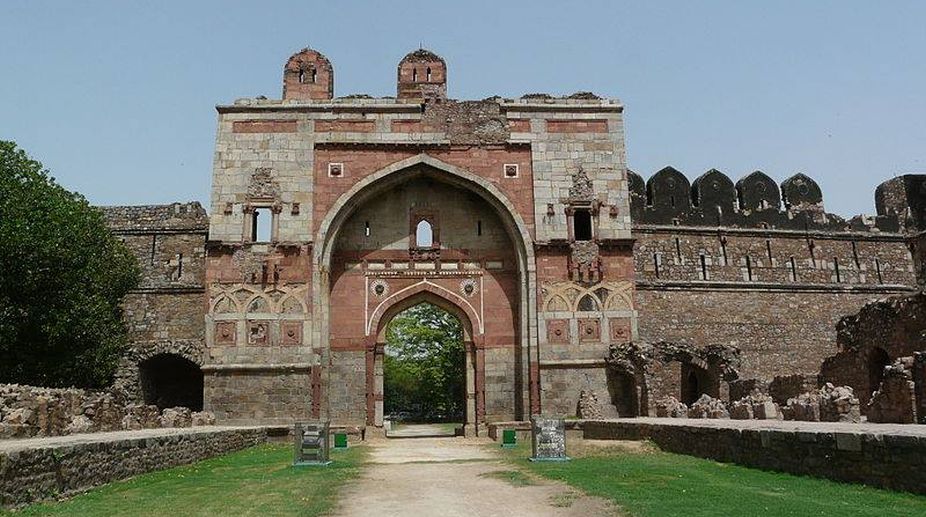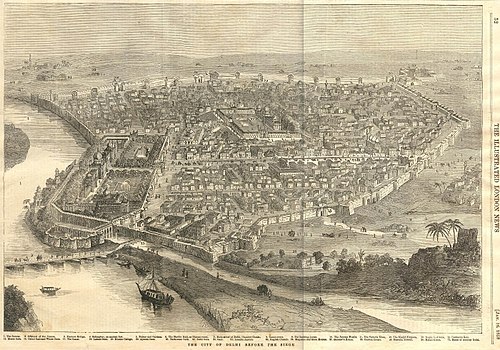Delhi of the Mughals never ceases to astonish one. Shah Jahan built not only a new Capital, but also imparted a certain unique tradition to it.
According to Shama Mitra Chenoy, Delhi was 22 Khawaja-ki-Chaukhat ( hub and threshold of 22 saints). The city had 14 gates: Delhi Darwaza, Rajghat Darwaza, Khizri Darwaza, Calcutta Darwaza, Nigambodh Ghat Darwaza, Kela Ghat Darwaza, Lal Darwaza, Kashmiri Darwaza, Badarroo Darwaza, Kabuli Darwaza, Pathar Ghat Darwaza, Lahauri Darwaza, Ajmeri Darwaza and Turkman Darwaza.
The names of the wicket gates or windows (now none exist) through which people entered and exited from the old fort city were:
Zeenatul Masajid Khirkee
Nawab Ahmad Bakhsh ki Khirkee
Nawab Ghaziuddin ki Khirkee
Musamman Burj ki Khirkee
Muslim Garh ki Khirkee
Naseer Ganj ki Khirkee
Nai Khirkee
Shah Ganj Khirkee
Ajmeri Darwaza ki Khirkee
Sayyad Bhole ki Khirkee
Buland Bagh ki Khirkee
Farash Khana ki Khirkee
Ameer Khan ki Khirkee
Khalil Khan ki Khirkee
Bahadur Ali Khan ki Khirkee
Nigambodh ki Khirkee.
There were also 14 Khirkis or windows in the Walled City. According to Prof Aleem Ashraf Khan, writing in the Indo-Persian Society’s publication, Delhi of the Mughals, printed by Mohammed Anees, the enclosing wall of the city, a mud one, built in four months, crumbled a year later in heavy rain and the emperor ordered it to be rebuilt in stone and lime-mortar.
Shahjahanabad, the seventh city of Delhi, was built by Shah Jahan in 1649 like a fortress encircled by strong and high red–brick walls with 14 entry gates to the city, in addition to 16 wicket gates called windows (khirkis in Urdu language). A number of bastions built of stone were added by the British, in addition to repairing the earlier fort, to make the fort more secure. The gates were designed and built for the people to have access and the royal procession to enter or exit when going out in diverse directions. Out of the 14 gates, five gates have survived, namely, the Kashmiri Gate on the north, the Ajmeri Gate on the south-west, the Delhi Gate on the south-east, Turkman Gate on the south and the Nigambodh Gate on the north-east, all of which express vividly the splendor of the city. All the gates are located within a radius of 5–6 km (3.1–3.7 mi) in the present day Old Delhi. The Lahori gate on the Northeast, in the old city, was demolished (some remnant walls are seen at the crossing as may be seen in picture) and the area converted into the present day Lahori Bazar. The gates have a square plan with high arched openings, except for low height of the Nigambodh gate, and two openings—one for entry and another for exit—of the Kashmiri gate.

